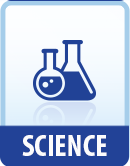|
This section contains 682 words (approx. 3 pages at 300 words per page) |

|
The rhythmic control of the cardiac cycle and its accompanying heartbeat relies on the regulation of impulses generated and conducted within the heart. Regulation of the cardiac cycle is also achieved via the autonomic nervous system. The sympathetic and parasympathetic divisions of the autonomic system regulate heart rhythm by affecting the same intrinsic impulse conducting mechanisms that lie within the heart in opposing ways.
Cardiac muscle is self-contractile because it is capable of generating a spontaneous electrochemical signal as it contracts. This signal induces surrounding cardiac muscle tissue to contract and a wave-like contraction of the heart can result from the initial contraction of a few localized cardiac cells.
The cardiac cycle describes the normal rhythmic series of cardiac muscular contractions. The cardiac cycle can be subdivided into the systolic and diastolic phases. Systole occurs when the ventricles...
|
This section contains 682 words (approx. 3 pages at 300 words per page) |

|


